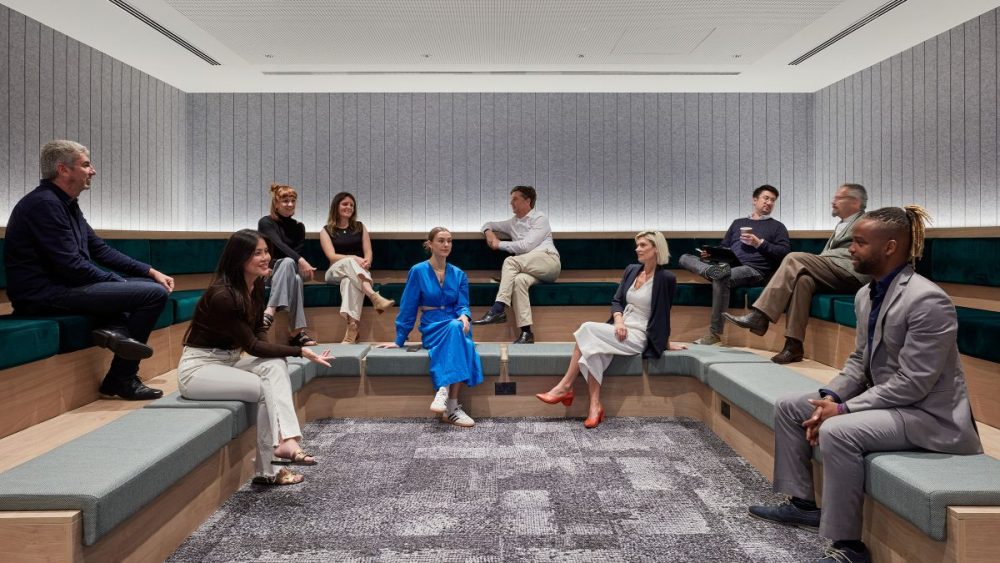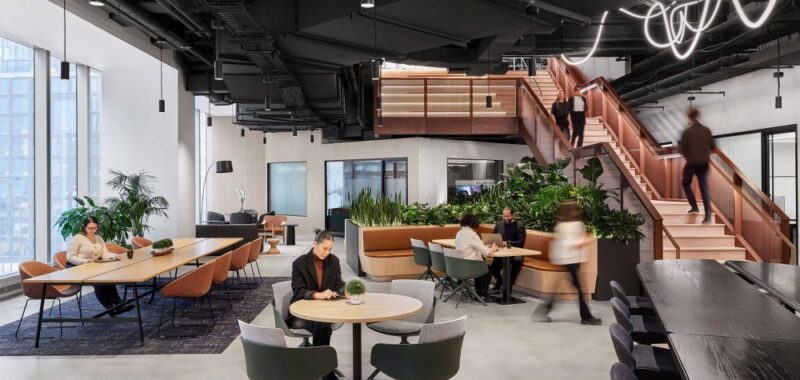M Moser‘s Grant Christofely and Nabil Sabet ask this elusive workplace question and offer what the think the role of being together in the workplace has evolved to be.
Pressing questions remain as companies navigate the ever-evolving arena of workplace dynamics: How should work actually work? Is what we are doing now even working? The answers in mainstream conversation remain vague, at best, and end up having you feel like ‘no, what I’m doing is probably not working.’
As designers and workplace strategists at M Moser, it’s our job to design towards the purpose and potential of space. We often reflect on the growing concerns among businesses as they grapple with the need for more structured environments, whether they are hybrid or not. While many big tech and Fortune 500 companies have experimented with prioritizing employee choice, they find that without clear guidelines and a modern approach to their physical space, this perceived freedom may not lead to desired business outcomes.

These concerns prompt a critical re-evaluation of what the office is for, what it means to work together physically and the distinct value it brings across various work modes—be it collaborative, individual or social. The challenge lies not just in bringing people back to the office but in defining the purpose of their presence and ensuring it aligns with organizational goals.
The Employer-Employee Pact
The office is more than a space for work—it is a tool for achieving an organization’s goals while embodying its values. A well-designed workplace shows respect for employees by providing a healthy and stimulating environment, but also, it provides a physical place to facilitate people’s best work.
In its optimal state, it reflects a commitment to the planet through sustainable energy use and material choices. It supports and celebrates wellbeing through quality indoor air, access to natural light, ergonomic and tech settings and spaces that inspire through art and beauty. Elements like these are essential as they demonstrate that an employer values both their employees and their impact on the wider community.

Physical Office v. Modern Times
The office is more than just a place where tasks are completed; it’s a hub of collaboration that technology alone cannot replicate. Work is not solely about production; it’s about the contributions we make to the broader workplace community and how we synchronize our skills with the expertise of others. This synergy is the essence of innovation. In this light, the office isn’t just a physical space but a dynamic environment that supports the kind of interaction and engagement necessary for increased creative and innovative outcomes.

Unmatched Value
 Despite advancements in technology and with so much of human-to-human communication being non-verbal, no digital tool has yet surpassed the alignment and efficiency achieved through in-person interactions. However, the purpose of gathering in a physical space extends beyond efficiency; it’s about deeply understanding and defining our roles and tasks. This clarity becomes crucial especially when business objectives shift rapidly. In-person work settings allow for real-time, dynamic adjustment and a deeper comprehension of both individual and collective goals, ensuring that everyone is not just working, but working effectively towards the right targets.
Despite advancements in technology and with so much of human-to-human communication being non-verbal, no digital tool has yet surpassed the alignment and efficiency achieved through in-person interactions. However, the purpose of gathering in a physical space extends beyond efficiency; it’s about deeply understanding and defining our roles and tasks. This clarity becomes crucial especially when business objectives shift rapidly. In-person work settings allow for real-time, dynamic adjustment and a deeper comprehension of both individual and collective goals, ensuring that everyone is not just working, but working effectively towards the right targets.
Spontaneity and Serendipitous Encounters
The physical workplace should serve as a catalyst for synchronicity and provide numerous opportunities for people to connect, align on goals and share innovative ideas.
This shared ‘third space’ is primed for social connection and facilitating stronger bonds and spontaneous, informal interactions. Organizations that value the power of collective effort recognize the importance of creating areas for gathering and interaction. By designing environments that encourage knowledge sharing and collaboration, businesses can harness the full potential of their teams. These spaces are not just physical locations but are strategically crafted to enhance connectivity and support a vibrant exchange of ideas, driving innovation and collective success.

“Hey, how’d you do that?”
Yes, technology supports communication – but in-person interactions remain the most effective way to share and generate new ideas.
The physical workplace also spurs stronger mentorship and learning opportunities by offering direct access to knowledge and continuous learning opportunities – which are vital for career development.

This direct access to colleagues facilitates not only information transfer but also nurtures relationships that promote professional development and skill enhancement. In-person interactions enable real-time feedback and spontaneous connections that are less feasible online. Offices designed with learning zones, scrum areas for quick collaboration, and resources like libraries and digital platforms further support an ongoing culture of learning. As not all mentorship occurs in a formal setting, having a balance of formal and informal spaces enables and encourages all types of mentorships and personal development. These types of investments help to fuel innovation and maintain a competitive edge.

Deeeeeeep Work
Create environments that minimize outside distractions and enable deep, focused work.
In these environments, employees can engage intensely with their tasks without interruption. A well-designed office space achieves this by incorporating quiet zones, soundproof meeting rooms and private work pods that support comfort, concentration and contemplation. Such spaces deliberately isolated from high-traffic areas, ensuring that noise and disruptions are kept to a minimum. Ergonomic furniture and adjustable lighting further enhance these areas, making them conducive to prolonged periods of focus.
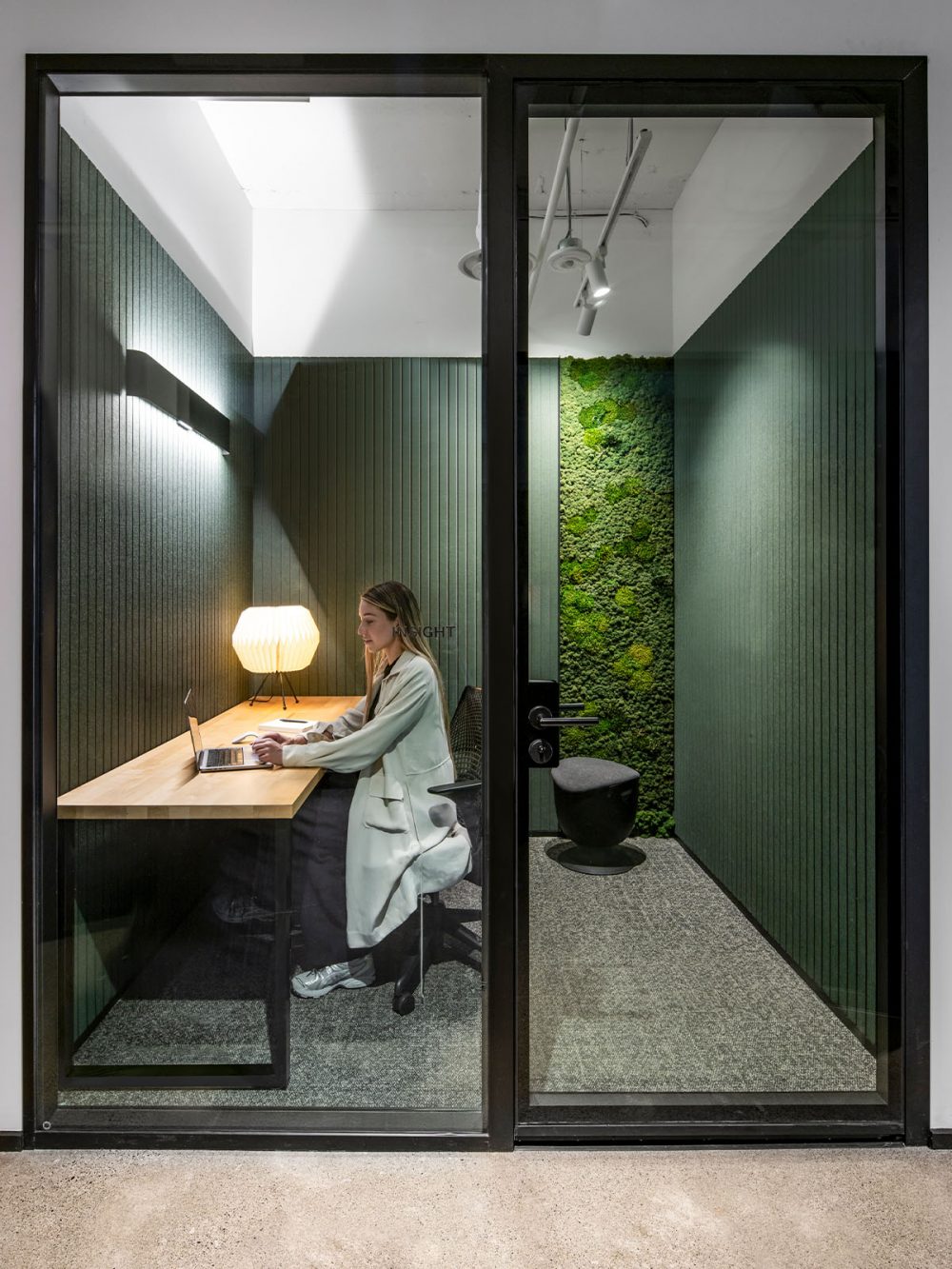
What’s Actually Working?
The success of a hybrid model, or any other workplace model, hinges not just on the physical space but on the underlying organizational culture.
A beautiful office cannot compensate for a disconnected workplace culture. It is about creating an environment where strategies align with cultural strengths, supporting a place where employees are eager to engage and be a part of.
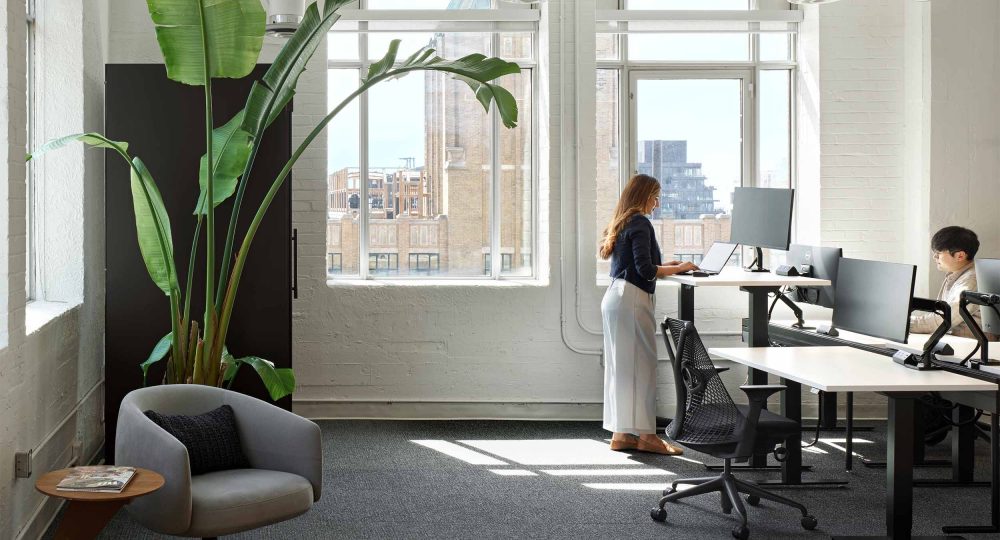
3 M Moser Case Studies
HSBC, New York

Through integrated design services and close collaboration with our client, we delivered a transformative space that empowers employees, supports connection and drives purposeful engagement. Our team helped to downsize and rightsized its real estate while enhancing its 5 floors. We focused on change management with an emphasis on health and sustainability. By doing so, we help HSBC create an office with a strong magnetic pull, attracting a high percentage of employees to return to the workplace.
Confidential Client, Canada

Our team led the redesign of this Canadian portfolio with a focus on flexibility, sustainability and human-centered design. We adapted each location to evolving work styles and behaviors post-pandemic, creating adaptive spaces ready for future changes. Our playbook and ‘kit of parts’ incorporate behaviour-based and agile methodologies, crafting spaces that not only meet modern work dynamics but also re-engage employees with enthusiasm.
Baker Tilly, Vancouver
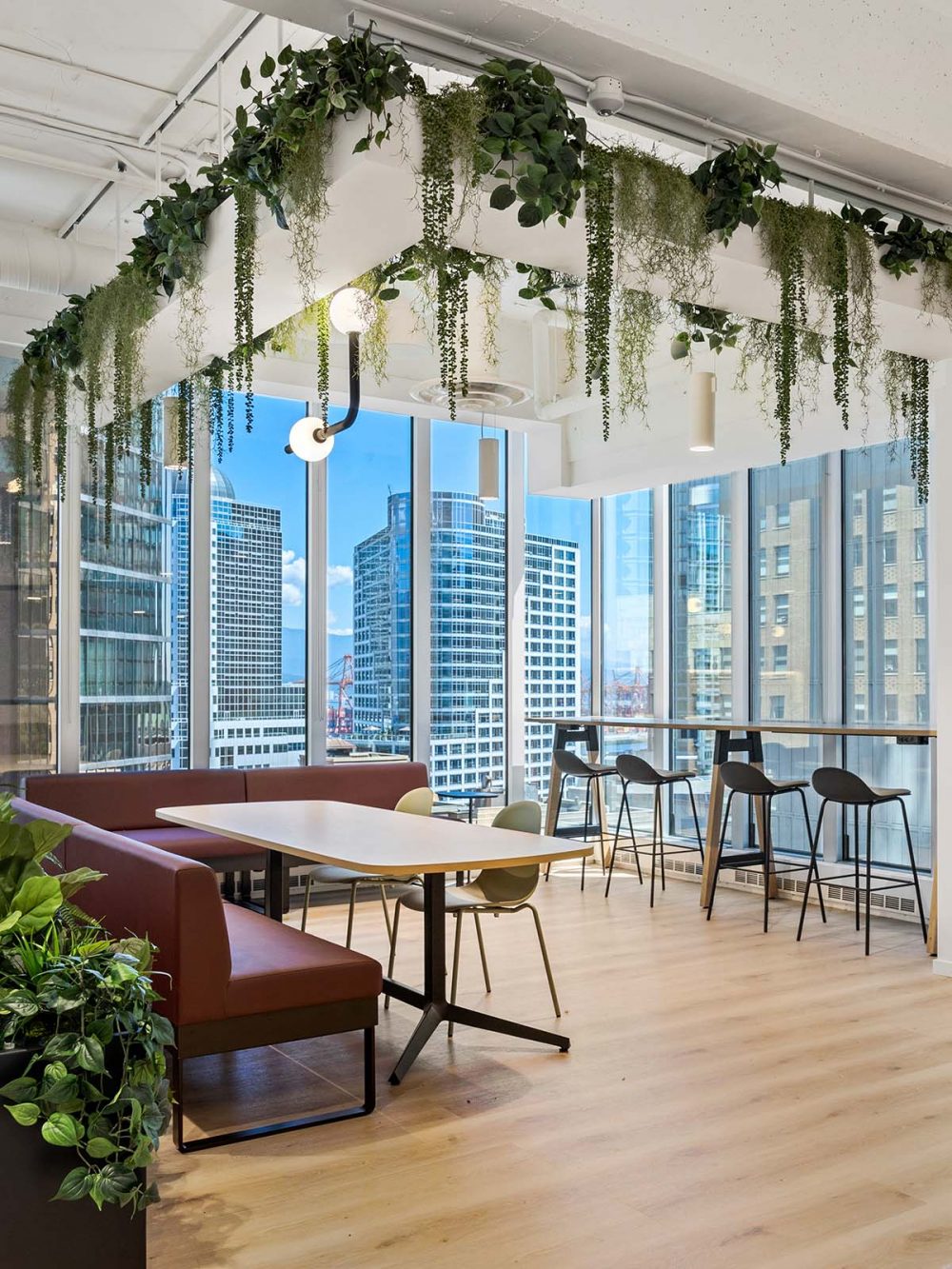
We transformed this headquarters from a traditional office into a modern, adaptable, tech-driven space that reflects the company’s identity and core values. Our tenant improvement design shifted from closed exterior offices to an open, collaborative setup, supporting teamwork, community and innovation. Prioritizing employee wellbeing and comfort, we created a dynamic and inclusive workspace that encourages a return to the office. This redesign has been uber successful, significantly increasing in-person headcount and underscoring the effectiveness of the physical workplace.
The Mystery of Doing the Right Thing
Understanding what needs to be done in a workplace transformation involves more than following trends—it requires insight-driven decision-making that is specific to each organization. If a cookie-cutter approach is taken, it will not work out.

In essence, reimagining work and the workplace in 2024 and beyond is about much more than logistical arrangements or aesthetic updates; it’s about building a culture that aligns with the physical spaces we create, ensuring that both are designed not just to be functional but to inspire and uphold the values that lead to true innovation and collective success.
It’s about deciphering the real value of synchronicity and collaboration beyond the buzzwords and ensuring that efforts in design and culture support and celebrate an inclusive ‘we’ rather than an isolated ‘me.’
